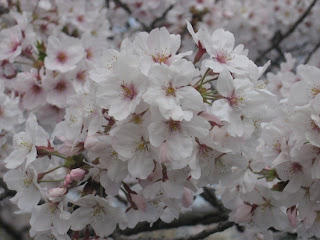
Sakura or Cherry Blossom (サクラ) is the Japanese name for ornamental cherry trees, Prunus serrulata, and their blossoms. Cherry fruit (known as sakuranbo) come from a different species of tree. It can also be used as a name. There are many dozens of different cherry tree varieties in Japan, most of which bloom for just a couple of days in spring. The Japanese celebrate that time of the year with hanami (cherry blossom viewing) parties under the blooming trees. in
Japan, cherry blossoms symbolize the transience of life because of their short blooming times. They have also come to represent clouds due to their nature of blooming en masse. Falling blossoms are used as metaphors for fallen warriors who died bravely in battle. Due to this connotation, they are closely associated with the samurai. This theme remains alive today and is often observed in pop culture, especially manga and anime. Music also works with the theme; for example, the band Kagrra often uses sakura in its songs and live shows for ambiance. The flower is also represented on all manner of consumer goods, including kimono, stationery, and dishware. Cherry blossoms are an enduring metaphor for the ephemeral nature of life, and as such are frequently depicted in art.There is at least one popular folk song, originally meant for the shakuhachi (bamboo flute), titled "Sakura", as well as a number of pop songs. "Sakura" is also a common Japanese female name.
Japan’s most beloved variety of sakura is the Somei Yoshino. Its flowers are nearly pure white, tinged with the palest pink, especially near the stem. The flowers bloom and usually fall within a week, before the leaves come out. Other categories include yamazakura, yaezakura, and shidarezakura. The yaezakura have large flowers, thick with rich pink petals. The shidarezakura, or weeping cherry, has branches that fall like those of a weeping willow, bearing cascades of pink flowers.












No comments:
Post a Comment